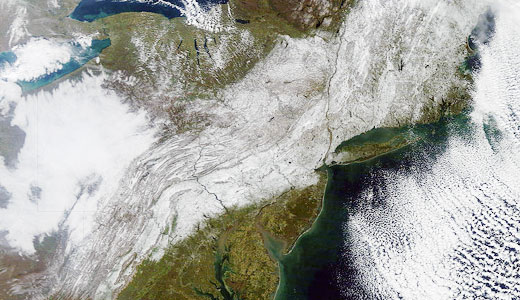
The end of October, a powerful snowstorm hit the East Coast, knocking out electricity for about two million homes and leaving at least three dead. In the wake of this blizzard, a draft UN report has found a link between man-made climate change and disastrous weather. The facts are worrying.
Heat waves have caused significant wildfire outbreaks in the U.S. this year. Floods, cyclones, and even dust storms became increasingly more prevalent. These and other weather phenomena can – and have – caused major disasters. And, according to the report, this will worsen in the future.
The voluminous draft on this subject will find itself at a meeting in Kampala later this month, thanks to hundreds of scientists working for the Intergovernmental Panel for Climate Change.
Neville Nicholls, a professor at Monash University in Melbourne, Australia, stated, “This is the largest effort that has ever been made to assess how extremes are changing.” Nicholls is a coordinating author of one of the report’s informative chapters.
The draft report paints what is likely an accurate picture of today’s climate situation. The increasing frequency and ferocity of disastrous weather, it says, poses a great risk for humanity in the years to come. The report seeks to determine whether such weather can be contributed to freak acts of nature, or whether it is part of a long-term climate shift. The latter, it finds, is more likely.
The impact of manmade global warming has had quite a few ripple effects, including rising temperatures, increased amounts of water in the atmosphere, and warming of ocean surfaces.
Evidence for this can be found in an ongoing string of weather disasters, including forest fires in Siberia, extreme flooding in Pakistan and India, and a number of situations in the U.S., like Hurricane Irene, the Texas drought, North Dakota flooding, and perhaps the most recent example – the crippling East Coast snowstorm.
The October blizzard, which wreaked havoc on eastern Pennsylvania in particular, also battered West Milford, N.J, which received 15.5 inches of snow on Saturday night, while Plainfield, Mass. got 14.3. Some of the widespread issues caused by the nor’easter included downed trees, snapped power lines, and traffic accidents.
Nobel-winning climate scientists have been working to determine the factors that contribute to such harsh weather. However, examining the role of natural weather fluctuations and rising levels of greenhouse gases has proven to be a difficult process.
Conclusions were made by the report about future weather trends, and what people should expect in decades to come. Some of these findings included:
It’s a 90 to 100 percent certainty that the size and frequency of warm daily temperature extremes will grow, on a massive scale, over the 21st century.
It is also very likely that the length and frequency of warm spells (like heat waves) will increase over land areas.
It is 66 to 100 percent certain that peak temperatures will increase up to 5.4 degrees Fahrenheit by 2050, and 9.0 F by 2100.
Snowfalls and heavy rain spells will almost certainly increase throughout many regions over the next century, particularly in the tropics and at high latitudes.
Simultaneously, droughts will probably intensify in more areas, especially the Mediterranean area, central Europe, North America, northeastern Brazil, and southern Africa.












Comments